Robert Mapplethorpe X, Y, Z Portfolios Washington, D.C.: Harry Lunn; New York: Robert Miller; London: Robert Self, 1978. X, 1977/1978. Thirteen selenium toned gelatin silver prints, mounted on black rag board. Each approximately 19.4 x 19.4 (7 5/8 x 7 5/8 in). Each signed, numbered 20/25 in pencil with a sequentially numbered blindstamp on the mount. Colophon numbered '20' in ink, poem by Paul Schmidt, signed by Schmidt in ink, plate list and red paper interleaving. Contained in a gilt stamped black silk clamshell box. One from an edition of 25 plus 6 lettered artist's proofs. Y, 1977/1978. Thirteen selenium toned gelatin silver prints, printed 1978 and mounted on white rag board. Each approximately 19.4 x 19.4 (7 5/8 x 7 5/8 in). Each signed, numbered 24/25 in pencil with a sequentially numbered blindstamp on the mount. Colophon signed, numbered '24' in ink, poem by Patti Smith plate list and pink paper interleaving. Contained in a gilt stamped grey silk clamshell box. One from an edition of 25 plus 6 lettered artist's proofs. Z, 1979-1981. Thirteen selenium toned gelatin silver prints, printed 1981 and mounted on white rag board. Each approximately 19.4 x 19.4 (7 5/8 x 7 5/8 in). Each signed, numbered 23/25 in ink with a sequentially numbered blindstamp on the mount. Colophon signed, dated '81', numbered '23' in ink, essay by Edmund White, plate list and stone paper interleaving. Contained in a gilt stamped brown silk clamshell box. One from an edition of 25 plus 6 lettered artist's proof.
Provenance Robert Miller Gallery, New York Literature X: Mapplethorpe, London: Jonathan Cape, 1992, v.p.; Pictures: Robert Mapplethorpe New York: Arena Editions, 1999, n.p.; Y: Mapplethorpe Pistils, London: Jonathan Cape, 1996, v.p.; Mapplethorpe: The Complete Flowers, Düsseldorf: teNeues, 2006, n.p.; Z: Robert Mapplethorpe Black Book, Saint Martin's Press, 1988, n.p.; Robert Mapplethorpe Ten by Ten, München: Schirmer/Mosel, 1988, v.p.; Mapplethorpe, London: Jonathan Cape, 1992, v.p. Catalogue Essay Presented in this lot are the complete suite of Portfolio works by Robert Mapplethorpe 'X', 'Y', 'Z', the story and sum of everything we expect from him as an artist. These portfolios were created to exist and be seen together. 'X' depicts part of Mapplethorpe’s own world, he was an active participant, the images reveal something that he was proud to belong to and they have undisputed dignity. The subjects are posed neatly, bodies of iron that shine with elegance, the images beg the question ‘Why shouldn’t we accept beauty in this’ even if we don’t want to answer. Polarity is ever present in Mapplethorpe’s works – something so free and uninhibited but yet contrived and austere – a gentleman and a promiscuous dandy, the beyond shame attitude which punches straight to the heart leaving an indelible relief. No matter the viscosity of the activity there is still calm. The viewer perhaps is the only guilty party presuming that the interactions are causing harm when actually we are witnessing prescribed pleasure. A portrait of a tradesman by Irving Penn or a stoic depiction of a member of German Society by August Sander has no more credence or respect. 'Y' concentrates solely on the flower – Mapplethorpe explores the form through manipulation of light and shadow - through experimentation and careful balance he stimulates the heart beat of the inanimate blind or the still Gardenia. Nothing about these images could ever be confused or described as a snapshot – the flowers are isolated like his other subjects, statuesque as any Greek Marble, exhaulted on a platform sometimes naked other times with props (reflecting his portrait style) elevating them above the mundane 'Z' is the link between Sex and Art which was purely and simply Mapplethorpe’s life. Again the stage is set, this time with his reference to the black male. The portraits among these works are representations of ‘fantastical chic’, figure heads of masculinity, the most majestic kings - nothing plucked startled from the streets to jar or unnerve our conscience – Mapplethorpe’s mainstream 1960s formalism is rock solid. Unfortunately not only with his work and the images contained in these portfolios was he wide open to critical acclaim but also to criticism – a bird caught on the wire – the images push the boundaries of “modernity” whilst the composition would fit nicely in to the usual photographic style of the Nineteenth Century, a period that Mapplethorpe admired and collected. Read More Artist Bio Robert Mapplethorpe American • 1946 - 1989 After studying drawing, painting and sculpture at the Pratt Institute in the 1960s, Robert Mapplethorpe began experimenting with photography while living in the notorious Chelsea Hotel with Patti Smith Beginning with Polaroids, he soon moved on to a Hasselblad medium-format camera, which he used to explore aspects of life often only seen behind closed doors. By the 1980s Mapplethorpe's focus was predominantly in the studio, shooting portraits, flowers and nudes. His depiction of the human form in formal compositions reflects his love of classical sculpture and his groundbreaking marriage of those aesthetics with often challenging subject matter. Mapplethorpe's style is present regardless of subject matter — from erotic nudes to self-portraits and flowers — as he ceaselessly strove for what he called "perfection of form." View More Works
Robert Mapplethorpe X, Y, Z Portfolios Washington, D.C.: Harry Lunn; New York: Robert Miller; London: Robert Self, 1978. X, 1977/1978. Thirteen selenium toned gelatin silver prints, mounted on black rag board. Each approximately 19.4 x 19.4 (7 5/8 x 7 5/8 in). Each signed, numbered 20/25 in pencil with a sequentially numbered blindstamp on the mount. Colophon numbered '20' in ink, poem by Paul Schmidt, signed by Schmidt in ink, plate list and red paper interleaving. Contained in a gilt stamped black silk clamshell box. One from an edition of 25 plus 6 lettered artist's proofs. Y, 1977/1978. Thirteen selenium toned gelatin silver prints, printed 1978 and mounted on white rag board. Each approximately 19.4 x 19.4 (7 5/8 x 7 5/8 in). Each signed, numbered 24/25 in pencil with a sequentially numbered blindstamp on the mount. Colophon signed, numbered '24' in ink, poem by Patti Smith plate list and pink paper interleaving. Contained in a gilt stamped grey silk clamshell box. One from an edition of 25 plus 6 lettered artist's proofs. Z, 1979-1981. Thirteen selenium toned gelatin silver prints, printed 1981 and mounted on white rag board. Each approximately 19.4 x 19.4 (7 5/8 x 7 5/8 in). Each signed, numbered 23/25 in ink with a sequentially numbered blindstamp on the mount. Colophon signed, dated '81', numbered '23' in ink, essay by Edmund White, plate list and stone paper interleaving. Contained in a gilt stamped brown silk clamshell box. One from an edition of 25 plus 6 lettered artist's proof.
Provenance Robert Miller Gallery, New York Literature X: Mapplethorpe, London: Jonathan Cape, 1992, v.p.; Pictures: Robert Mapplethorpe New York: Arena Editions, 1999, n.p.; Y: Mapplethorpe Pistils, London: Jonathan Cape, 1996, v.p.; Mapplethorpe: The Complete Flowers, Düsseldorf: teNeues, 2006, n.p.; Z: Robert Mapplethorpe Black Book, Saint Martin's Press, 1988, n.p.; Robert Mapplethorpe Ten by Ten, München: Schirmer/Mosel, 1988, v.p.; Mapplethorpe, London: Jonathan Cape, 1992, v.p. Catalogue Essay Presented in this lot are the complete suite of Portfolio works by Robert Mapplethorpe 'X', 'Y', 'Z', the story and sum of everything we expect from him as an artist. These portfolios were created to exist and be seen together. 'X' depicts part of Mapplethorpe’s own world, he was an active participant, the images reveal something that he was proud to belong to and they have undisputed dignity. The subjects are posed neatly, bodies of iron that shine with elegance, the images beg the question ‘Why shouldn’t we accept beauty in this’ even if we don’t want to answer. Polarity is ever present in Mapplethorpe’s works – something so free and uninhibited but yet contrived and austere – a gentleman and a promiscuous dandy, the beyond shame attitude which punches straight to the heart leaving an indelible relief. No matter the viscosity of the activity there is still calm. The viewer perhaps is the only guilty party presuming that the interactions are causing harm when actually we are witnessing prescribed pleasure. A portrait of a tradesman by Irving Penn or a stoic depiction of a member of German Society by August Sander has no more credence or respect. 'Y' concentrates solely on the flower – Mapplethorpe explores the form through manipulation of light and shadow - through experimentation and careful balance he stimulates the heart beat of the inanimate blind or the still Gardenia. Nothing about these images could ever be confused or described as a snapshot – the flowers are isolated like his other subjects, statuesque as any Greek Marble, exhaulted on a platform sometimes naked other times with props (reflecting his portrait style) elevating them above the mundane 'Z' is the link between Sex and Art which was purely and simply Mapplethorpe’s life. Again the stage is set, this time with his reference to the black male. The portraits among these works are representations of ‘fantastical chic’, figure heads of masculinity, the most majestic kings - nothing plucked startled from the streets to jar or unnerve our conscience – Mapplethorpe’s mainstream 1960s formalism is rock solid. Unfortunately not only with his work and the images contained in these portfolios was he wide open to critical acclaim but also to criticism – a bird caught on the wire – the images push the boundaries of “modernity” whilst the composition would fit nicely in to the usual photographic style of the Nineteenth Century, a period that Mapplethorpe admired and collected. Read More Artist Bio Robert Mapplethorpe American • 1946 - 1989 After studying drawing, painting and sculpture at the Pratt Institute in the 1960s, Robert Mapplethorpe began experimenting with photography while living in the notorious Chelsea Hotel with Patti Smith Beginning with Polaroids, he soon moved on to a Hasselblad medium-format camera, which he used to explore aspects of life often only seen behind closed doors. By the 1980s Mapplethorpe's focus was predominantly in the studio, shooting portraits, flowers and nudes. His depiction of the human form in formal compositions reflects his love of classical sculpture and his groundbreaking marriage of those aesthetics with often challenging subject matter. Mapplethorpe's style is present regardless of subject matter — from erotic nudes to self-portraits and flowers — as he ceaselessly strove for what he called "perfection of form." View More Works
.jpg)

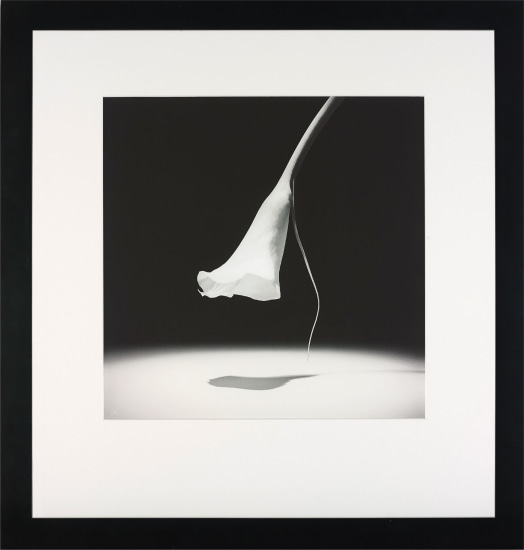

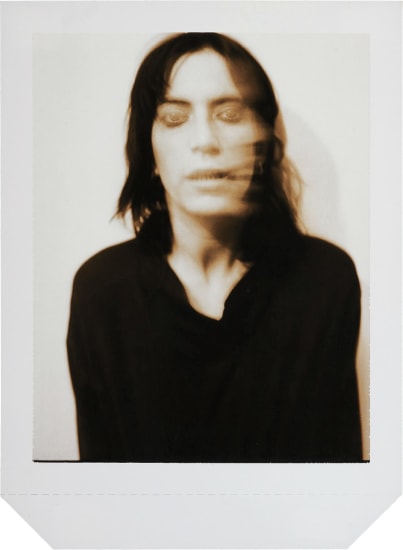
.jpg)
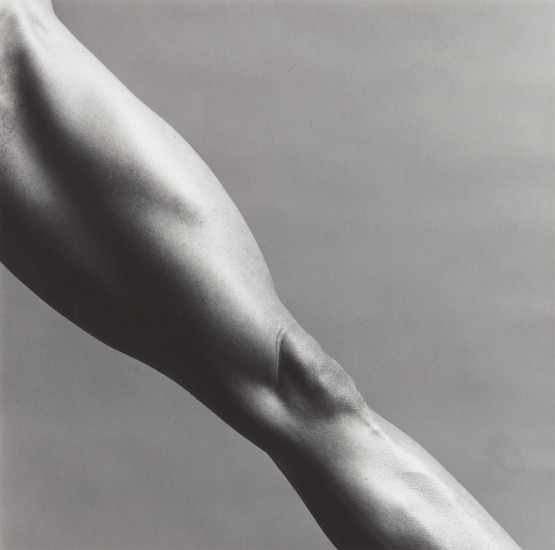
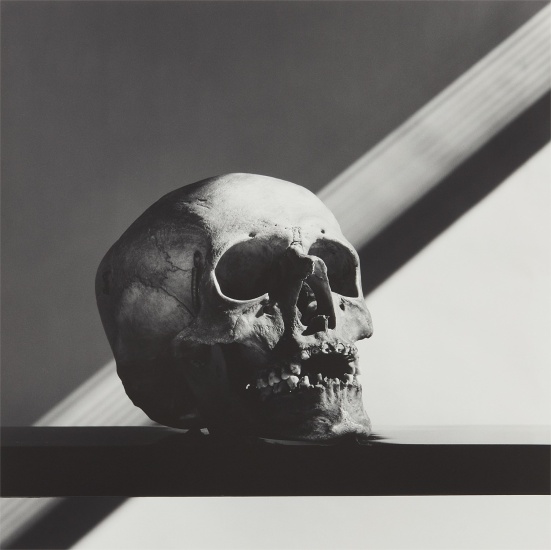
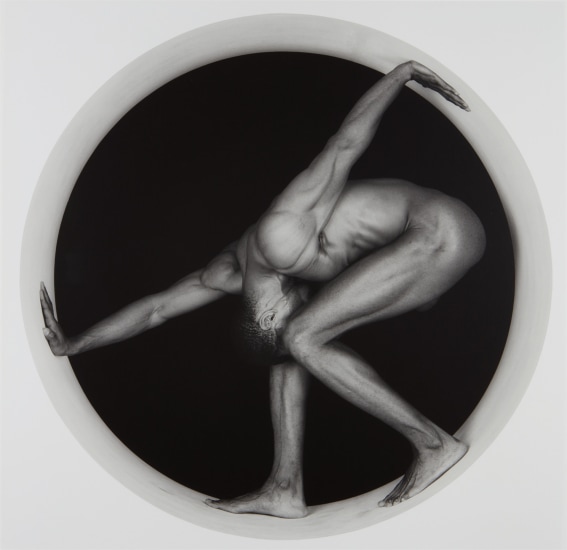




Try LotSearch and its premium features for 7 days - without any costs!
Be notified automatically about new items in upcoming auctions.
Create an alert